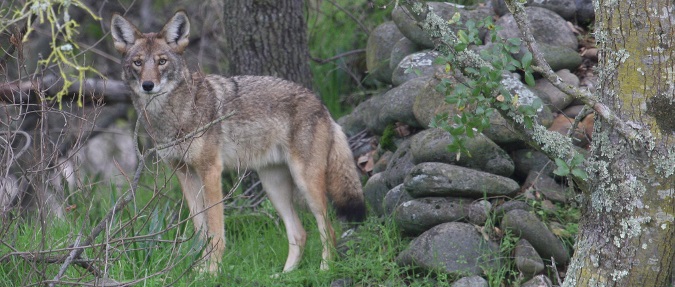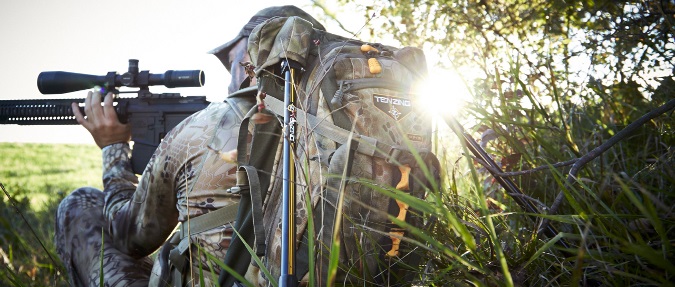
Coyotes, foxes and bobcats are North America’s most abundant terrestrial predators. These species play key roles in the ecosystem, helping to manage rodent populations, scavenging carrion and preying on larger animals that may be sick or weak. They are also cunning and adaptable.
Coyotes, in particular, have undergone significant changes relative to range, behavior and physiology in just a short period of time. Once relegated to the American West, coyotes have expanded their range to include most of the North American continent over the past 100 years or so. Such expansion has been linked to human development and the resultant extirpation of larger predators like gray wolves, black bears and cougars.
Their ability to adapt to human land use development and a relative abundance of larger prey like white-tailed deer has also brought about changes to the coyote’s social structure. Once largely solitary, coyotes now live in highly flexible social organizations ranging from family groups or loosely knit packs of unrelated individuals. Studies also suggest that their body size is increasing, perhaps due to hybridization with wolves and domestic dogs, which is well documented in certain areas throughout their expanded range. These adaptations have affected changes in the ways coyotes hunt, especially for larger prey like deer, which they typically pursue in pairs or small groups.
Why hunt predators?
Since predator species have few natural enemies throughout much of their range, hunting helps to keep populations in check. This is especially important in areas where predators are numerous and may be adversely impacting livestock, pets, game or other wildlife populations. In addition to preying on such animals, coyotes are also known to carry and transmit a variety of diseases and parasites. Predator pelts also have commercial value and may be legally sold in most states. Further, predator-hunting opportunities are widespread and typically extend into late winter when other hunting seasons are closed. Finally, almost anyone who enjoys hunting for deer, turkey, elk or other game species is likely to find predator hunting fun, challenging and rewarding due to the active calling it employs and the intellect of the animals pursued.

Gearing up
With the popularity of predator hunting on the rise, a full compliment of predator-hunting gear and accessories is currently available over a variety of brands and price points.
When used within the limits of its particular range and in accordance with applicable state laws, almost any firearm can be successfully used for predator hunting. Most serious predator hunters, however, prefer bolt-action or AR-style rifles chambered in the neighborhood of .223 Rem, .22-250 Rem, .220 Swift, .204 Ruger or .243 Win. Those shooting the smaller end of this range can expect better results using the heaviest premium ammunition they can obtain. Heavier-barreled varmint models also offer increased downrange accuracy. That said, deer hunters just getting into predator hunting are likely to find their existing deer rifles to be capable and acceptable predator guns. Be sure to check your state’s hunting regulations for any restrictions.
As with most kinds of hunting, quality optics are critical to predator-hunting success. Binoculars help hunters spot predators early enough to prepare for a shot. Eight-to-ten-power binos with 40-50 mm objective lenses offer a user-friendly combination of magnification, image stability and brightness. Laser rangefinders allow hunters to accurately range distance-to-target. Models that automatically compensate for slope and employ bright or adjustable displays make ranging easier in areas of varying terrain and during low-light periods. Finally, a quality, variable-power riflescope allows predator hunters to clearly identify their target and place an accurate killing shot. Since predators are often most active during low-light periods, look for a scope that will perform in such conditions. The light-gathering abilities of a riflescope increase as objective lens size increases. A larger tube diameter also helps, although to a lesser degree. Finally, lower magnification settings increase light-gathering capability in a variable-power scope. What all of this suggests is that a predator hunter will be well-served by choosing a scope with a large objective lens of at least 50 mm and a larger tube size of 30-33 mm. Make these light-gathering factors your primary considerations, then select a variable-power magnification that makes the scope useful for the other types of hunting you may do with your rifle.
Calling is an essential part of predator hunting. Bobcats, coyotes and foxes are highly opportunistic and will investigate any sounds made by their prey, especially distress cries. Additionally, coyotes, in particular, are highly vocal animals and communicate with a complex vocabulary. While volumes have been written on coyote communications and vocalizations, biologists still don’t have a solid understanding of what it all means. As with any game-calling endeavor, firsthand observation is the best teacher, so beginning predator hunters are likely to experience the best outcomes by sticking to the proven rodent squeaks and distress cries that can be produced, with practice, by inexpensive mouth calls. Programmable electronic calls that can be placed and activated remotely are great options for more advanced predator hunters.
Decoys are also effective predator-hunting tools. Anything small and furry that moves can be irresistible eye candy to predators. Naturally curious and bold at times, coyotes, foxes and bobcats are also cunning and wary, so an intriguing visual queue – presented in combination with effective calling – can complete the illusion that gives predators the confidence necessary to close the distance.
Mobility is key when hunting predators. Most experienced predator hunters suggest setting up in an area offering good concealment and extended visibility, then staying there for 15-30 minutes. Depending on how intrusive you are while getting to your spot, consider waiting 10-15 minutes for things to settle down before calling. Call intermittently for 15-30 seconds at a time and remain still after calling while scanning the area for signs of incoming predators. If nothing appears within 15 minutes or so, most experts advise moving on and repeating the process at another set-up.
A product like Tenzing’s well thought out TZ PP15 Predator Pack makes transporting your firearm, ammunition, calls and other essential gear between set-ups quick and easy. Furthermore, this clever pack’s unique, spring-loaded adjustable legs and padded seat allow predator hunters to quickly set up anywhere and remain comfortably seated while calling and shooting.
When the exciting time comes to make a shot, it’s tempting to simply level the crosshairs on the center of the animal – regardless of the angle – and squeeze the trigger. But killing animals with fast, relatively lightweight projectiles can be tricky business. Know the particular ballistics of your rifle and ammunition, and don’t risk shots that may wound an animal and prevent recovery. Make shot selection the same priority you make it while hunting deer or other game. When using smaller calibers, a broadside shot into center mass directly above the front leg is the highest percentage kill shot a predator hunter can make.
Predator hunting is rewarding for all the right reasons. It is challenging due to the quarry’s intellect, available when other hunting seasons may be closed, and typically highly beneficial from a management standpoint. All it takes is a few key pieces of gear and a desire to participate.
